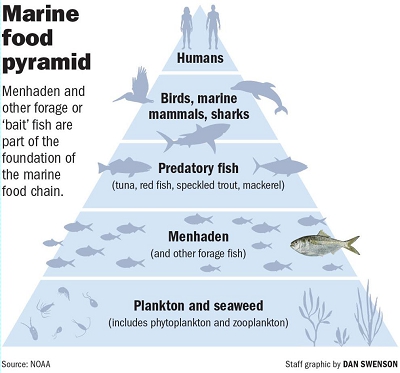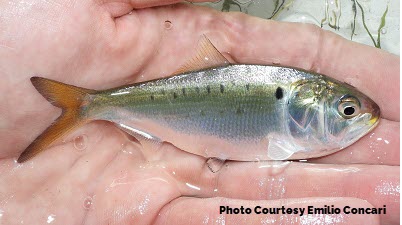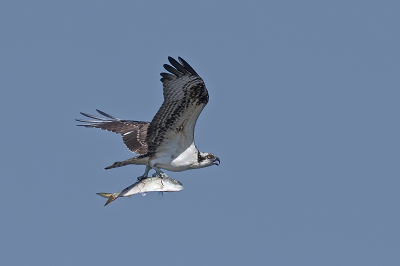
Atlantic Menhaden
Found in coastal and estuary waters all along the Atlantic, Menhaden play a critical role in the marine ecosystem. They provide almost every other major marine species with their best source of protein, including marine mammals, predatory fish, and seabirds. Nearly every species, from whales to crabs, depends on this keystone fish to thrive. Nothing packs the nutritional punch of a Menhaden.
Rich in omega-3 oils, the Menhaden is a perfect source of food. They evolved over the millennia to provide other species with necessary nutrients.
Their Role in the Food Chain

There are strong correlations between localized Menhaden depletion and the challenges of other species as they struggle to shift their diets to different sources.
Current long-term declines are seen in their reproduction rates across the lower Chesapeake, the exact locations where healthy Menhaden stocks typically congregate. Studies are showing reproductive rates far below sustainable levels. The birds are not finding enough Menhaden to feed their newborn chicks and are starving to death. The numbers are even below those seen during the 1970s when DDT caused catastrophic failures.
Striped Bass are among the game fish species experiencing extraordinary depletion rates all along the Atlantic Coast. Pressured by pollution, warming water temperatures, invasive species, fishing pressure, and the reduction of Menhaden, their primary food source, the Striped Bass have seen drastically declining numbers over the past five years. Highly restrictive slot limits and reduction in commercial catch have recently been implemented in all Atlantic Coast States because the Menhaden reproduction rate is below sustainable levels. The Chesapeake Bay is the primary nursery for Striped Bass on the Atlantic Coast. Menhaden's role in the sustainability of a healthy population of this iconic game fish is critical.
What are the Other Benefits of an Abundant Menhaden Population?
Menhaden are filter feeders, primarily consuming billions of tiny phytoplankton, algae, and zooplankton in the water column. They are the ocean's vacuum cleaners, averaging 4 gallons of water per minute. They play an essential role, just like oysters, in keeping the water clear. Their lack of abundance in nearshore waters, like that of oysters, has led to many of the issues we see related to oxygen-depleted dead zones. Both species are critical to the health of the bay and coastal waters. Clear water also encourages the growth of eel grass beds, the primary habitat of so many juvenile species. Fish urine is the other critical but hardly known ingredient needed to keep eel grass beds healthy. Unlike human waste, fish, marine mammals, and seabird waste is chemically balanced as the perfect fertilizer for seagrass beds, kelp forests, and coral reefs. A thriving Menhaden population grows a robust marine environment.
See Menhaden in Action:
And what does a healthy marine environment grow? A healthy socioeconomic environment. More business, more jobs, more food. When everything is doing well, we all do better.
Menhaden are certainly one of the most important fish in the sea, foundational to the health of our coastal ecosystems and economies.
Learn Why Menhaden are in Danger

